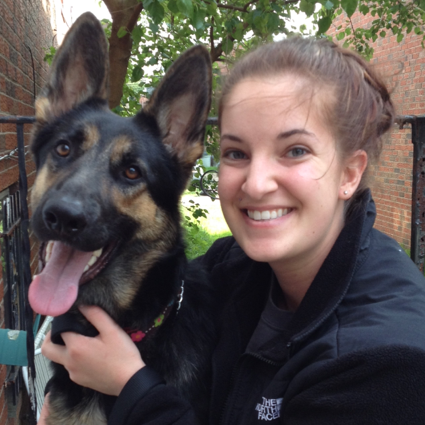The pandemic has changed a lot of things, including how we celebrate the holidays. With Halloween coming up soon, whether your neighborhood is moving to a no-contact trick or treating method, a trunk or treat event, or door-to-door with masks, there’s always a risk that the doorbell might be involved.
A lot of my clients have dogs who react to the sound, and even my own dog Wayne can struggle with the door.
I like to start with teaching a solid “place” and “stay”.
Go to Place
“Go to place” means “go to your place and stay until released”. I show how to train your dog here (video).
Stay
“Stay” means remain in that spot until released. Fellow Philly Unleashed trainer Cassi shows the difference between “stay” and “wait” here (video).
From there, it’s important to build desensitization to the doorbell or a door knock.
Desensitization: Using low levels of exposure to a stimulus that causes a reaction in order to build a gradual exposure that eliminates the response.
Wayne liked to be right at the door, trying to push through it when I had a delivery or a visitor, and I didn’t want to risk escalating his behaviors for safety reasons. I started with management, building a solid “go to place” so I could grab a delivery without him right there. Once I was able to trust the handling around other people, he started to realize that his “place” was his safe place. When the knock or doorbell happens, he goes there and gets a lot of treats and he doesn’t have to handle the scary person coming in the door. He avoids conflict and stays away, trusting me to not let people come near him or get too close.
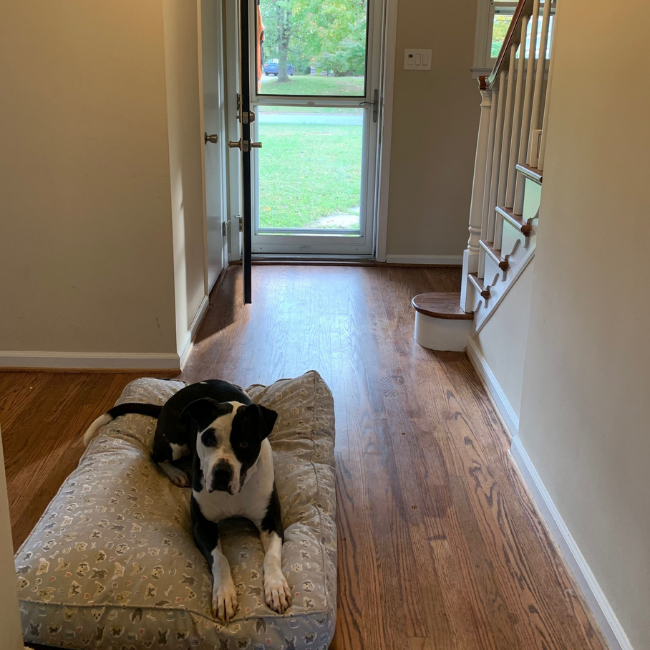
When working on this with your dog, be sure to break it down into small, manageable steps.
First, either knock or ring the doorbell, but no one enters the door. This is something you can do or a family member can do. This eliminates the association of an exciting experience following the door knock or bell. If it is not possible to actually knock or ring, or if your dog has too strong of a reaction, then play the sound on your phone or computer.
Start at the lowest possible volume, and slowly increase the volume as long as there is no reaction from your dog. Do two repetitions per volume and slowly increase it, looking for no reaction from your dog.
Counterconditioning: Counterconditioning means using something rewarding to your dog to change their conditioned emotional response to a trigger, whether a doorbell, another dog, or anything that causes a reaction.
It is possible to pair the doorbell with a treat in order to countercondition. Some people do both desensitization and counterconditioning, depending on the dog.
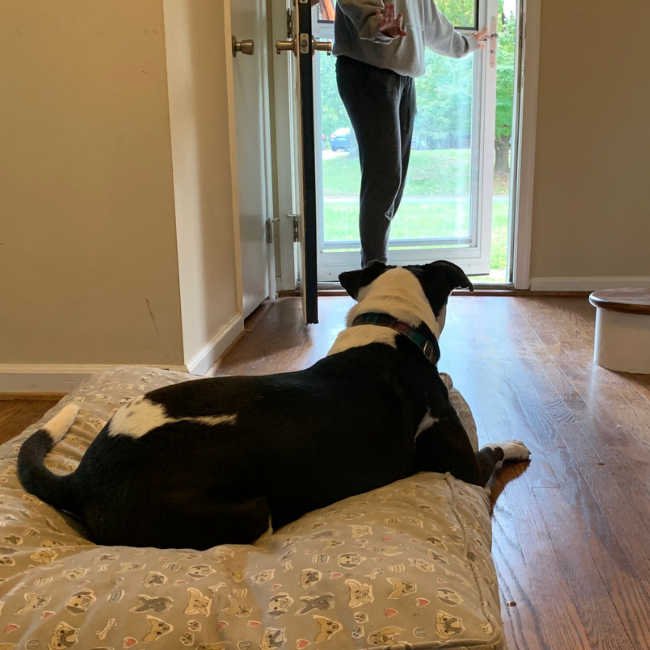
Second, pair the trigger noise with the front door area. If there is too big of a reaction, take the door out of the training, eventually adding the door back in. Since so many dogs bark at the sound of the doorbell, it’s been so conditioned that they need much slower work through it.
At any point if the dog is showing too much of a reaction, or they are overaroused, stop and reset. Lower the volume or take away the door.
Signs of too much: a lot of vocalization (barking or growling), distracted or roaming, won’t look at you, hyperactivity, tense (nervous), tense or cowering (scared). A dog can go from scared to aggressive behaviors or overexcited behaviors very quickly.
Third, slowly add the door. Because the door can be so exciting and triggering, each step may need to be conditioned. Add one step towards the door, but make sure to always deliver the treat back to your dog. Add two repetitions for each improvement or progression. Once you’re at the door, start slowly reaching for the door, extending the arm farther and farther. Add in touching the knob, then start to slowly turn the knob and open the door.
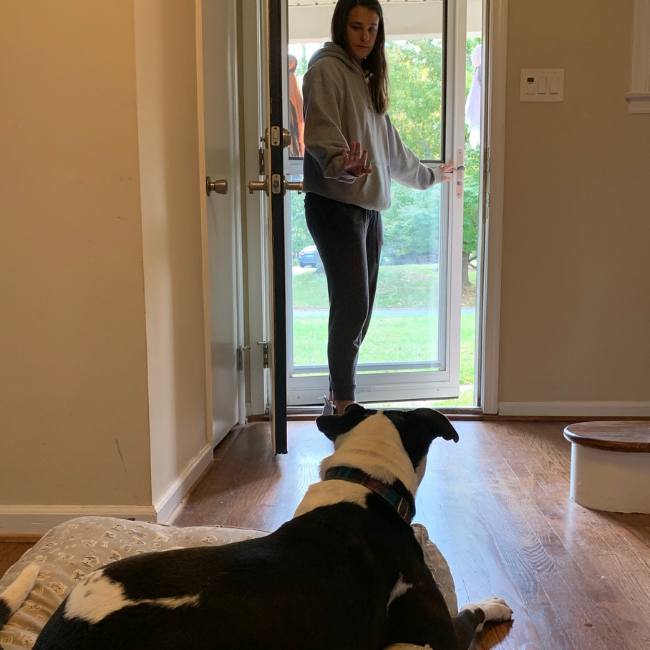
In-between each part, go to your dog and offer a delicious treat for not moving off of the mat. If they break at any point, stop and start over from the previous step. You may want to use a leash or dragline so you can quickly grab them and bring them back to their place.
Fourth, be sure to add in this work into everyday life once it is very controlled. Randomly ask your dog to go to their place, and open the door, even if no one is there.
Fifth, once your dog is really good at this, add in a person on the other side of the door. This can be a household member, a friend, or a trusted family member. Someone just needs to stand on the other side of the door without ringing or knocking. Just open the door and help your dog get used to seeing someone there.
Sixth, add in the knock or bell. Communicate with your assistant to let them know you will not be opening the door. They just need to knock or ring. Once you hear it, the dog should be sent to their place with an extended stay. Then release. The first few times are just hearing the trigger without opening the door.
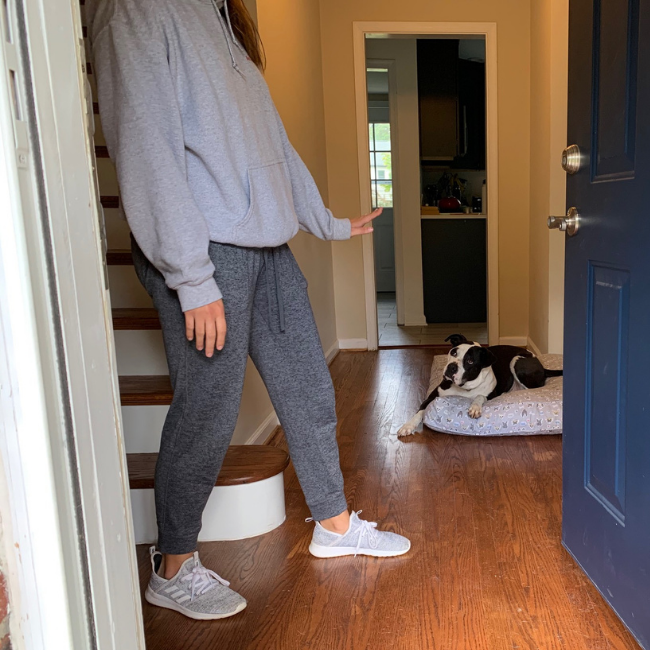
Seventh, once this is established, start adding in opening the door with someone on the other side.
Remember, this will vary depending on the dog and how intensely they react and why. Some dogs need a few days, while others may need a few months. They may get stuck at a certain point. The more practice, the better, but try not to do 20-minute sessions constantly. Just add it into daily life with a couple of repetitions here and here. If you’re already doing something with your dog, it’s easy to add in this practice.
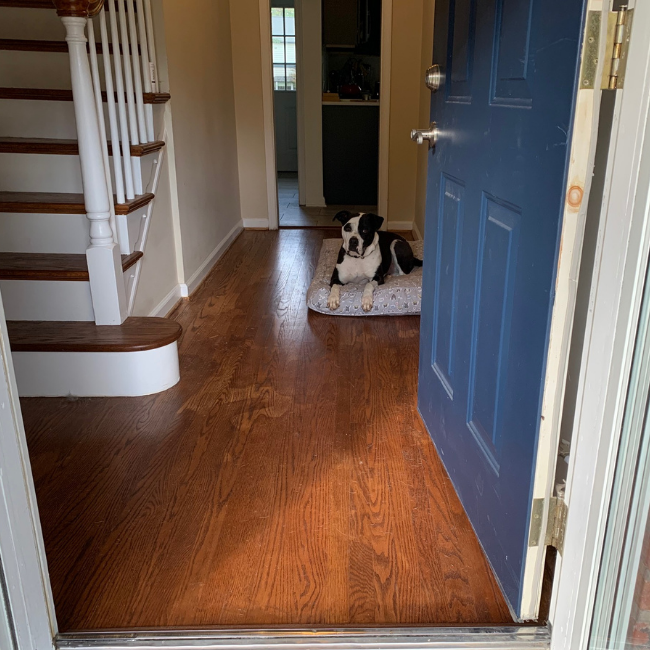
Eighth, start working on the person coming in. If at any point the dog gets worked up, stop and move back a step. Work on getting to the point where when the dog hears the doorbell, that they know, “I need to go to my place. Good things happen there.”
Additional cues that can be helpful:
- Touch
- Look
- Come
- Leave it
These are all great for redirections, adding movement, and getting them away from a trigger.
I use all of them with Wayne. It took us three weeks of sound desensitization, and then another three months of inconsistent practice to build up a reliable behavior. Adding in a person was harder because having visitors wasn’t a common thing for us. We’re now at the point where I can be on the other side of the room and I can point and say “go to place” to him, and he knows, “I don’t move until I get the break word and a delicious treat.”

